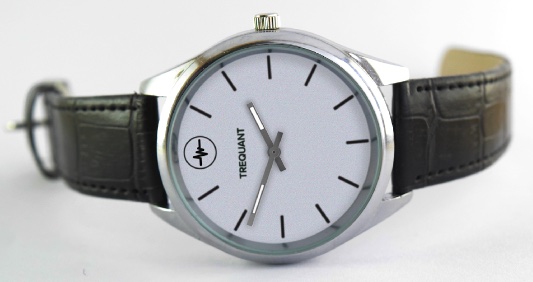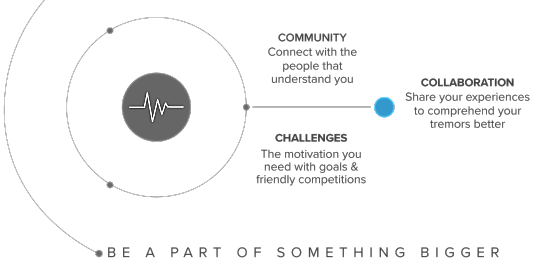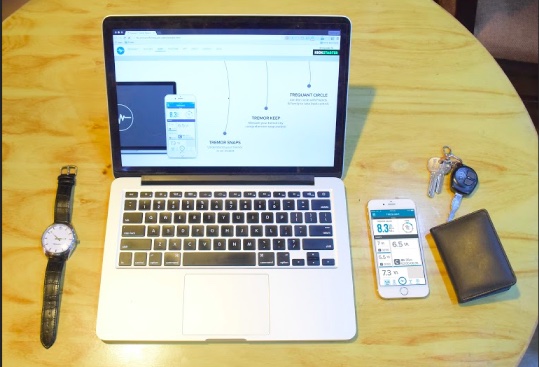Trequant Launches a Wearable, Watch-like Device to Monitor Tremors
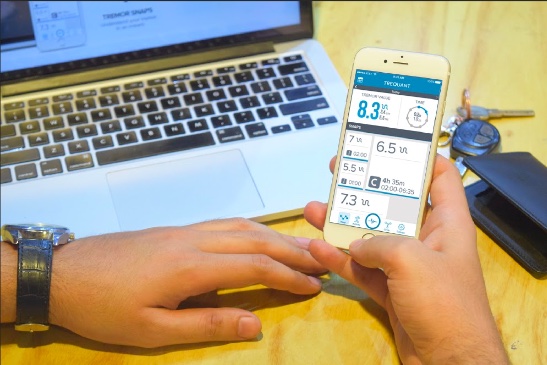
Trequant, Inc., a wearable device startup, is launching a Kickstarter campaign to raise money to market and further develop its tremor quantifying device. The Trequant wearable is designed to appear and feel like a normal analog watch, but contains advanced sensors that monitor the extremity tremors common to movement disorders like Parkinson’s disease (PD), dystonia, essential tremors, and other neurological conditions.
Tremors are unintentional, rhythmic muscle movements involving to-and-fro oscillations in one or more parts of the patient’s body, most commonly in the hands. Tremors are not life-threatening, but a lack of known treatments aggravates the condition. Once diagnosed, doctors tend to prescribe beta blockers, and sometimes anti-convulsants, to minimize their effects. For some disorders, such as PD and essential tremors, this unintentional trembling can make life difficult and inhibit execution of everyday chores. Trequant notes that roughly 75 percent of multiple sclerosis MS patients also experience tremors at some point, and MS tremors are often rhythmic, or forward-backward motions that often become uncontrollable.
 The Trequant wearable was under development by Fawad Ejaz Bhatti for the past two years. Bhatti describes it as a “Fitbit for tremor patients” that tracks and analyzes tremor patterns, and is capable of not only quickly diagnosing the tremor type, but also alerting the wearer of a medication timetable.
The Trequant wearable was under development by Fawad Ejaz Bhatti for the past two years. Bhatti describes it as a “Fitbit for tremor patients” that tracks and analyzes tremor patterns, and is capable of not only quickly diagnosing the tremor type, but also alerting the wearer of a medication timetable.
Trequant’s tremor quantifying device provides users with tools for self-assessment and enables physicians to monitor reports. Device data runs through a mobile device app with an easy to read scale to check tremor amplitude. It provides quantifiable measures of tremor type and when alerting a user about medications, also provides a visual scale reading of treatment effectiveness on tremors, a convenient feature for checking progress or comparing two treatments. Data can be saved in the cloud, and easily shared with the patient’s doctor and family.
Trequant has also constructed a platform for users to connect with others who have similar conditions, and share thoughts regarding novel and upcoming treatments or contemporary research into tremor disorders. The Trequant Circle is intended to forge a chain among patients, allowing them to help each other better understand the condition.
As its developers note, because “tremors primarily occur in the older generation, it might be a good way to help them socialize with each other. With Trequant Circle, people can add their friends, share their data with each other for discussion or collaborative analysis, and can motivate with each other with the help of positive competition.”
Looking like a stylish wristwatch, the Trequant device can also be worn without worry about further adding to the social stigma of having tremors.
The device was designed with the difficulty these people face in using smartphones and gadgets in mind. It has a long battery life that can last more than a week of continuous monitoring. Its big and bold interface may not appeal to some, but make it easier for tremor patients to navigate. The user can also easily be notified of incoming calls, messages, and medication schedules by a simple tap on the screen.
Other Trequant wearable features include:
• Full month backup, allowing users to store information for an entire month and easily sync data to Trequant’s cloud.
• A sleep monitoring system and alarm that tracks tremors during sleep and set alarms to help monitor a person’s condition.
• Vibrating notifications
• Continuous tremor monitoring
With the help of the Trequant wearable, patients will not just be able to get readings of their tremors, but will also be able to track their tremors in different scenarios, activities, and day-to-day behaviors, enabling them to better understand the effect of, say, eating broccoli, drinking wine, swimming, or even smoking on their condition.
Also coming soon is the Trequant Band, responding to popular demand from people who are not really accustomed to wearing wristwatches, and which can be used for not only for hand tremors, but also leg, neck, and head tremors as well. Its specifically intended for people with Primary Orthostatic Tremors, who have tremors in their legs with really high frequencies of upto 21 hz or even more. The band will come with multi-size support.
Tremors originating from chronic disorders often have no known cause, as research into tremor disorders is meager. Moreover, Trequant notes that tremor conditions have an attached stigma that causes anxiety and social isolation in patients, often originating from a lack of public awareness.
Trequant says it aspires to provide a platform for tremor patients to connect with one another and express their thoughts, emotions, and even misery. The company wants to break through the isolation patients’ feel, and provide education and knowledge about these disorders to the general public so research and funding can be better secured.
 “Tremors run in my family, I have seen how debilitating it can get for the people out there,” said Trequant’s founder, Fawad Bhatti, whose parents are affected by the disorder. Fawad’s brother, Dr. Danish Bhatti, is
“Tremors run in my family, I have seen how debilitating it can get for the people out there,” said Trequant’s founder, Fawad Bhatti, whose parents are affected by the disorder. Fawad’s brother, Dr. Danish Bhatti, is an assistant professor in the Department of Neurological Sciences at the University of Nebraska College of Medicine, and has been mentoring Fawad and his small product development team as an advisor.
an assistant professor in the Department of Neurological Sciences at the University of Nebraska College of Medicine, and has been mentoring Fawad and his small product development team as an advisor.
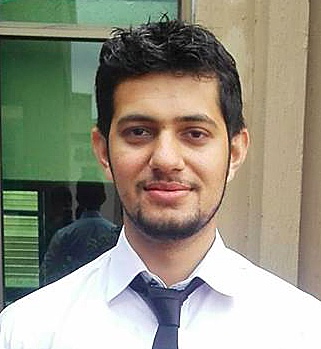 Trequant was formally founded in June 2015 by Bhatti and Usman Shabbir in Islamabad, Pakistan. The duo has recently, with the help of Google for Entrepreneurs and Black-box, relocated their main office to Palo Alto, California.
Trequant was formally founded in June 2015 by Bhatti and Usman Shabbir in Islamabad, Pakistan. The duo has recently, with the help of Google for Entrepreneurs and Black-box, relocated their main office to Palo Alto, California.
The Trequant KickStarter page can be accessed at:
https://www.kickstarter.com/projects/trequantifier/trequant-first-wearable-for-tremors?token=e35adb9e
For more information, visit: trequant.com
The Trequant blog can be found at: https://blog.trequant.com/
Source:
Trequant Inc.




